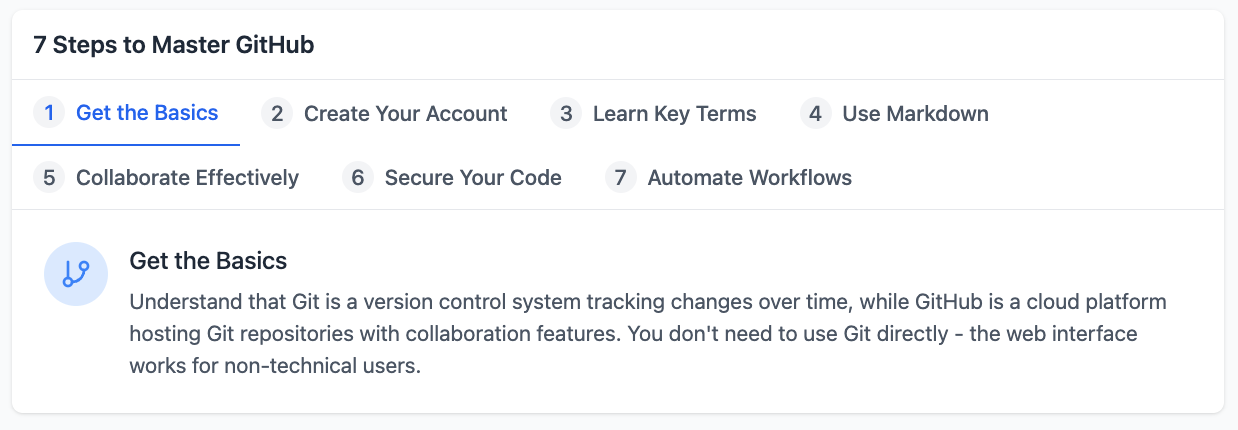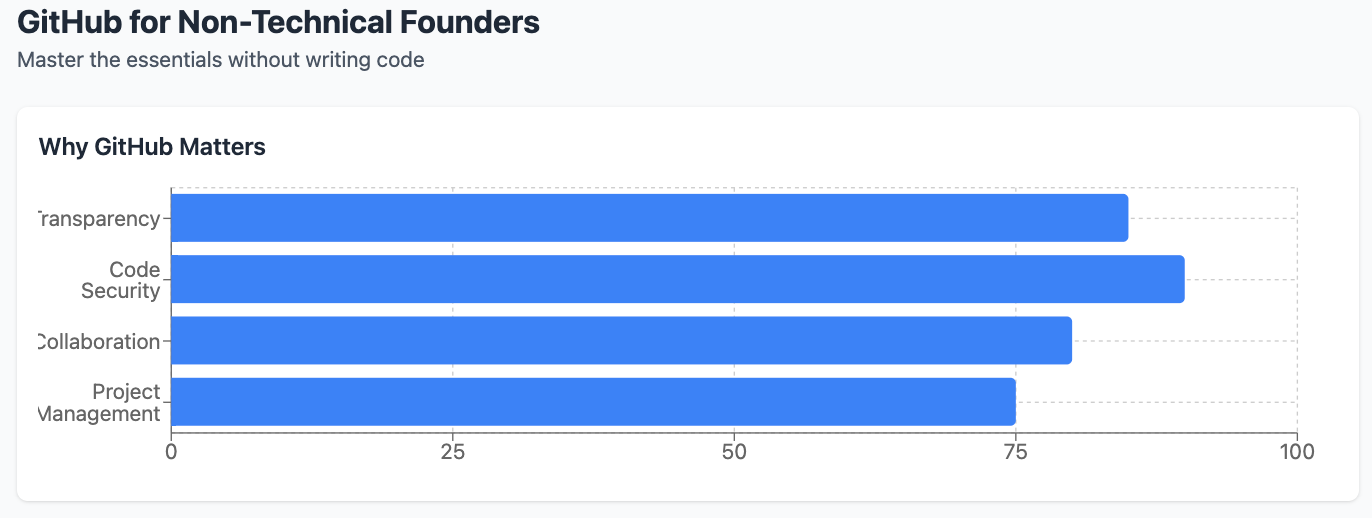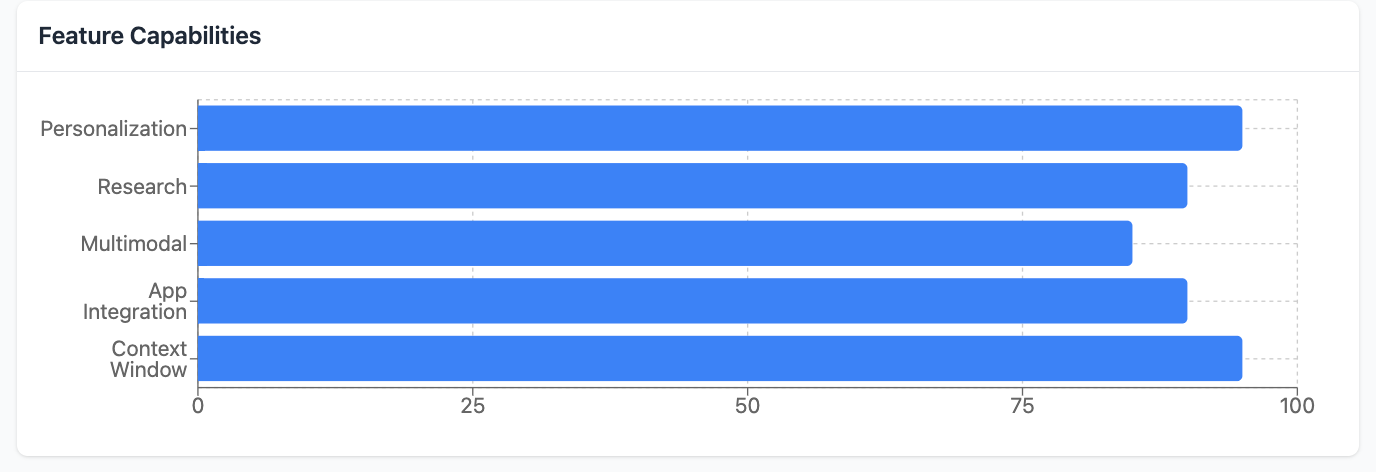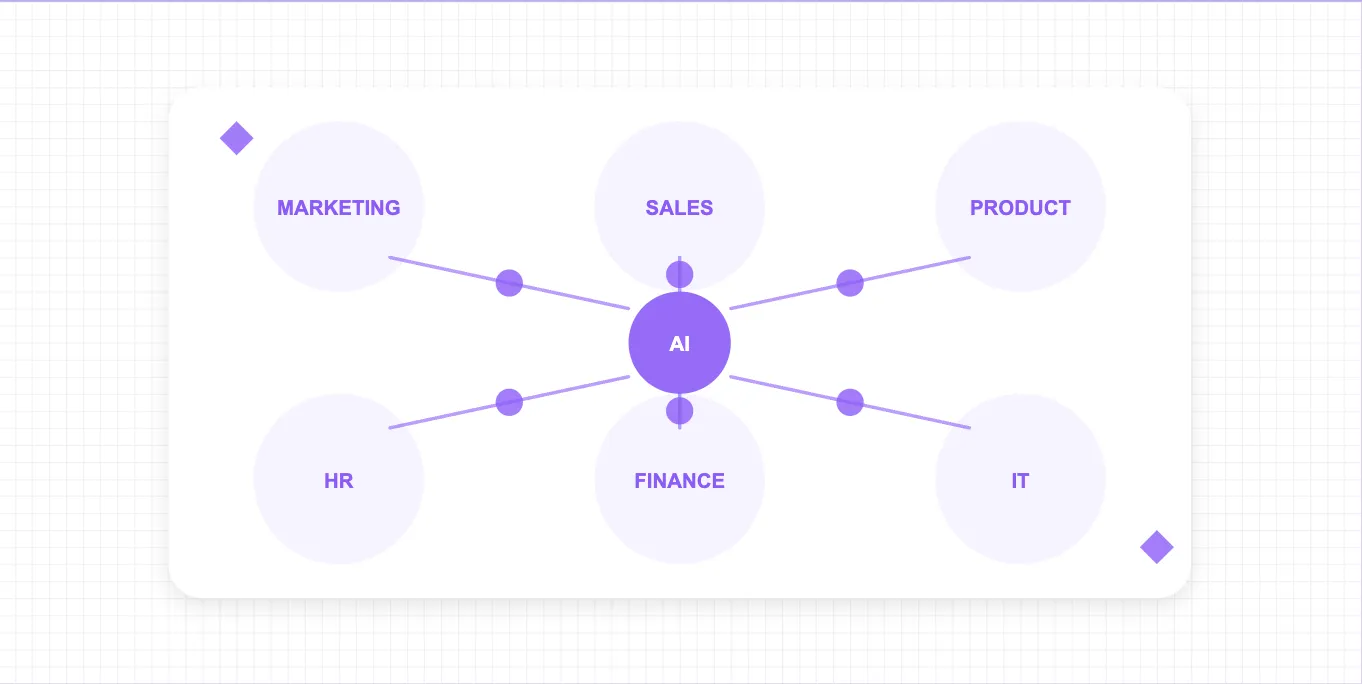Master Git GitHub: Essential Guide for Non-Technical Founders
As a non-technical founder, software development can be overwhelming. One tool you’ll inevitably run into is GitHub—the platform where most software development happens. While it may seem scary at first, understanding GitHub can give you valuable insights into your project and help you collaborate better with your technical team.
Why GitHub Matters for Non-Technical Founders in a Distributed Version Control System
GitHub isn’t just for developers. As Ben Balter explains, it’s a central platform where code, project progress, and discussions are tracked in one place. For you as a non-technical founder, GitHub offers:
-
Transparency: See real-time updates on what your dev team is working on
-
Code security: Store your intellectual property securely with proper access controls
-
Streamlined collaboration: Communicate directly within the context of code and features
-
Project management: Track issues, milestones, and progress without switching platforms
Many non-technical founders avoid GitHub, missing out on these benefits. But with a basic understanding, you can use this powerful tool without writing a single line of code. GitHub’s web interface is user-friendly and effective for non-technical users, facilitating collaboration and managing various text-based documents.

Introducing GitHub and Version Control
GitHub is a web-based platform that provides a user-friendly interface for version control and collaboration. But what exactly is version control? Simply put, version control is the practice of tracking and managing changes to code, documents, or other digital content over time. This is crucial in software development, where multiple people might be working on the same project simultaneously.
A version control system (VCS) helps developers collaborate by keeping a detailed record of all changes made to the codebase. GitHub is built on top of Git, a distributed version control system that allows multiple developers to work on the same project without overwriting each other’s work. This means that everyone can contribute to the project, and all changes are tracked and managed efficiently.
At the heart of GitHub are Git repositories (repos). These are project folders that contain all the files and their history. A GitHub repository (repo) is a central location where all project files, history, and collaborators are managed. This makes it easy for project and product managers, stakeholders, and developers to collaborate on development projects.
With GitHub’s web interface, you can create a new GitHub repository for every new project. This makes it simple to manage multiple projects and collaborate with others, ensuring that everyone is on the same page and that the project progresses smoothly.
7 Steps to Master GitHub for Non-Technical Founders
1. Get the Basics
Before you start, it helps to understand what Git and GitHub are:
-
Git is a version control system that tracks changes in files over time. Think of it as “track changes” in Word, but way more powerful.
-
GitHub is a cloud-based platform that hosts Git repositories and adds collaboration features. Creating a Git repository for every new project is a foundational practice for effective version control. This habit is crucial for anyone starting, as it prepares them for real-world development scenarios and enhances workflow efficiency, suggesting tools like GitHub Desktop for ease of use.
According to GitHub’s documentation, you don’t need to use Git directly to benefit from GitHub—the web interface provides everything non-technical users need.

2. Create Your GitHub Account
Getting started is easy:
-
Go to GitHub.com and sign up for a free account
-
Choose a professional username (ideally your name or company name)
-
Set up two-factor authentication for security
-
Complete your profile with a photo and bio
A GitHub reference guide recommends using your business email to keep professional activities separate from personal ones.
3. Learn the Key Terms
GitHub has its terminology that’s important to understand:
-
Repositories (repos): Think of these as project folders containing all files and their history
-
Branches: Parallel versions of the code that allow developers to work on features without affecting the main project* Commits: Saved changes to files, like snapshots in time
-
Pull Requests: Proposals to merge changes from one branch to another, with review capabilities
HubSpot’s beginner tutorial explains how understanding these concepts helps non-technical founders follow development progress without needing to understand the code itself.

4. Use Markdown for Communication
GitHub uses a simple formatting language called Markdown for documentation and comments. Learning basic Markdown will help you communicate more effectively:
-
Use # symbols for headings (# Main Heading, ## Subheading)
-
Create bullet points with - or *
-
Make text bold with text or italic with text
-
Add links with [link text](URL)
The Hello World guide from GitHub shows how Markdown can help you create structured, easy-to-read content for your team.
5. Collaborate Effectively with Pull Requests
Even without technical knowledge, you can meaningfully participate in development:
-
Issues: Create issues to track bugs, feature requests, or general tasks
-
Discussions: Use GitHub Discussions for broader conversations about product direction
-
Projects: Utilize GitHub’s project boards for kanban-style task management
-
Pull Request Reviews: Comment on changes and approve them before they’re merged
- Emphasize the importance of code review, where another developer examines the submitted changes to ensure quality and identify any potential conflicts or issues with the code
According to Reddit discussions, non-technical founders who actively participate in these areas gain more respect from their dev teams and stay better informed about project status.

6. Secure Your Code
Your code is a valuable asset that needs protection:
-
Create a GitHub Organization for your company instead of using personal accounts
-
Set appropriate access permissions (Admin, Write, Read, None) for team members
-
Enable branch protection on important branches to prevent accidental deletions
-
Consider using private repositories for sensitive code
-
Set up backup procedures for your repositories
Security discussions on Hacker News emphasize how proper GitHub management is key to protecting your intellectual property.
7. Automate Workflows
GitHub Actions can automate repetitive tasks:
-
Automatically run tests when new code is added
-
Deploy to staging or production environments
-
Generate reports or documentation
-
Send notifications when important events occur
GitHub workflow tutorials show how even non-technical users can benefit from these automations—they ensure consistency and reduce manual work for your team.
Understanding Commit History and Other Resources
Commit history is a vital aspect of any development project. It’s a record of all changes made to a project’s codebase, including who made the changes, when, and why. This history is crucial for tracking progress and understanding the evolution of the project.
Using Git commands like git log, you can view and navigate the commit history of a project. A commit is essentially a snapshot of changes made to the codebase, including new files, modified files, and deleted files. Each commit has a unique ID and timestamp, making it easy to track changes and revert to previous versions if needed.
Two essential Git commands are git push and git commit. Git commit is used to save your changes locally, while git push updates the remote repository with your local changes. This ensures that your work is backed up and accessible to your team.
A pull request is a way to propose changes to a project’s codebase. It allows others to review and approve the changes before they are merged into the master branch. This process is crucial for maintaining code quality and ensuring that all changes are thoroughly reviewed.
Code reviews are an integral part of the development process. They allow developers to review and provide feedback on each other’s code, ensuring that the code is of high quality and free of errors. Mastering Git and GitHub involves understanding how to use version control systems, Git commands, and GitHub’s web interface to manage projects and collaborate effectively.
By using GitHub and Git, developers can work on the same project simultaneously without worrying about overwriting each other’s changes. You can create a new branch for every new feature, making it easy to manage multiple features and collaborate with others. This flexibility and control are what make GitHub an invaluable tool for any development project.
Get Started
Now that you know the basics, here’s what to do first. Look at your repositories: Click the “Watch” button to get notified about activity
-
Star repositories: Use stars to favorite important projects for easy access
-
Play with the interface: Spend time clicking around to get used to GitHub
-
Start small: Begin with issues and pull requests before moving on to more advanced features
-
Ask questions: Don’t be afraid to ask your dev team to explain GitHub concepts you don’t understand
Common Mistakes to Avoid in Code Review
Non-technical founders make these mistakes when using GitHub:
-
Going around GitHub by only communicating requirements through email or chat
-
Setting unrealistic expectations based on commit frequency
-
Micro-managing by commenting on every pull request or issue
-
Ignoring security by giving everyone admin access or using personal accounts
Conclusion
GitHub isn’t just a developer tool—it’s a powerful platform that can bring transparency and efficiency to your whole project. By understanding the basics and participating in your GitHub repository, you’ll get insight into development progress, contribute to discussions, and keep your code secure.
As a non-technical founder, you don’t need to become a coding expert to benefit from GitHub. Follow these steps and you’ll collaborate better with your dev team and have more control over your project.
Remember, your dev team will appreciate your effort to understand their tools and process, and that will create a stronger partnership that leads to better products.
Let's Talk
Your ride-or-die partner
Your own world-class product team at a fraction of the cost
Tell us about yourself
- From Idea to Product 10X Faster
- Unlimited Request & Revisions
- Streamlined Tooling
- Your Dedicated Team
